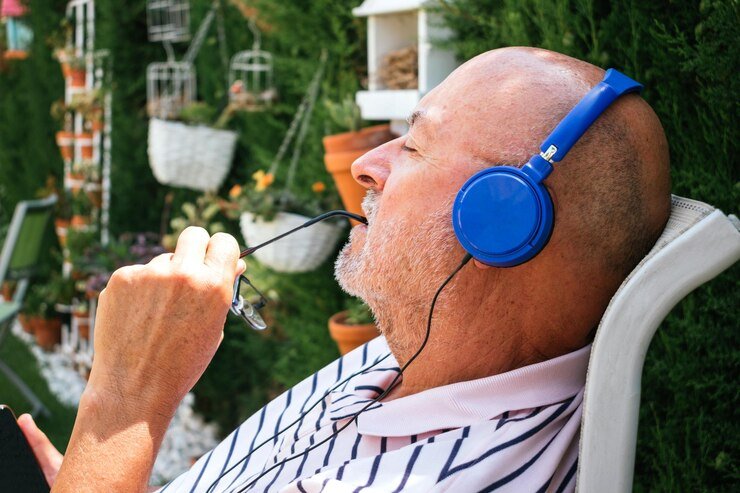Dementia, a progressive decline in cognitive function, can be a challenging journey for both patients and caregivers. As the disease progresses, communication can become difficult, leading to feelings of isolation and frustration. However, there is a glimmer of hope in the form of expressive therapies like music and art. These interventions go beyond traditional treatment, offering a unique approach to connect with individuals living with dementia and improve their quality of life.
Music: A Universal Language
Music transcends the limitations of language. Even in the later stages of dementia, when verbal communication becomes a struggle, the power of music remains. Familiar tunes can spark memories, evoke emotions, and create a sense of comfort and joy.
Music therapy incorporates music listening, singing, and even creating simple rhythms with instruments. Here’s how it benefits those with dementia:
Reduced Anxiety and Agitation: Listening to calming music can lower stress hormones and promote relaxation. Upbeat music can create a positive mood and encourage movement.
Improved Memory and Cognitive Function: Familiar songs can trigger autobiographical memories, stimulating the brain and promoting cognitive function. Singing along can further engage the brain and enhance memory recall.
Enhanced Communication and Social Interaction: Music therapy sessions often involve singing together, creating a shared experience that fosters social interaction and communication.
Promoted Sense of Well-being: Music can evoke a range of emotions, promoting feelings of happiness, nostalgia, and peace. This can significantly improve a patient’s overall well-being.
Art Therapy: A Canvas for Expression
Art therapy offers another powerful tool for connecting with individuals living with dementia. It provides a safe space for self-expression, even when verbal communication becomes difficult. Engaging in creative activities can be incredibly therapeutic, offering numerous benefits:
Improved Mood and Reduced Stress: The act of creating art can be calming and meditative, promoting relaxation and reducing anxiety.
Enhanced Social Interaction: Art therapy sessions can be conducted in groups, fostering social interaction and a sense of community among participants.
Stimulated Cognitive Function: Choosing colors, making shapes, and focusing on a creative task can stimulate cognitive function and improve memory.
Maintained Sense of Identity: Art therapy allows individuals with dementia to express themselves creatively, showcasing their unique personalities and fostering a sense of self-worth.
The Synergy of Music and Art
The beauty lies in combining music and art therapy. Listening to music while creating art can create a more immersive and engaging experience. The rhythm of music can inspire movement and guide the creative process, while the visual aspect of art can further enhance the emotional connection to music.
Benefits for Caregivers
Music and art therapy are not just beneficial for those with dementia; they can also be a valuable tool for caregivers. Participating in these sessions with their loved ones can create shared experiences, strengthen bonds, and provide a sense of accomplishment.
Conclusion
Music and art therapy offer a beacon of hope in dementia care. They provide a non-invasive and engaging way to connect with individuals on an emotional level, improve their quality of life, and offer a sense of comfort and joy. By incorporating these expressive therapies into dementia care plans, caregivers can empower their loved ones to live a more fulfilling life, even amidst the challenges of the disease.





